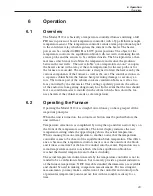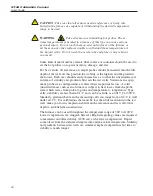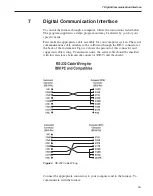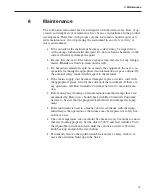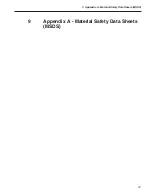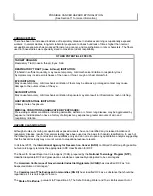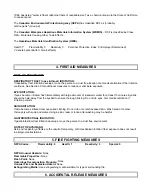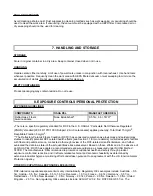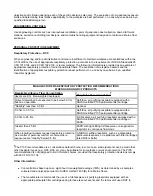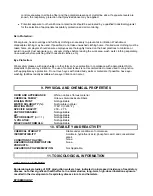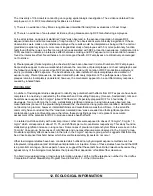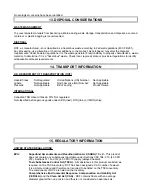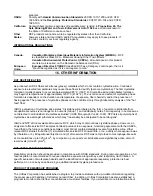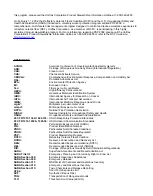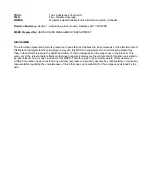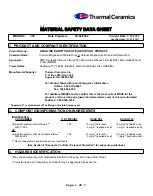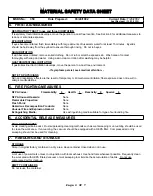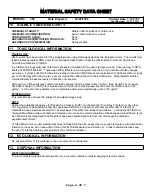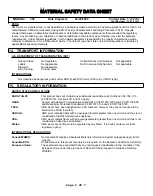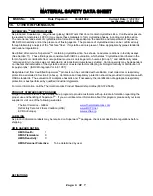
INTERNATIONAL REGULATIONS
RCF DEVITRIFICATION
As produced, all RCF fibers are vitreous (glassy) materials which do not contain crystalline silica. Continued
exposure to elevated temperatures may cause these fibers to devitrify (become crystalline). The first crystalline
formation (mullite) begins to occur at approximately 985° C (1805° F). Crystalline silica (cristobalite) formation
may begin at temperatures of approximately 1200° C (2192° F). The occurrence and extent of crystalline phase
formation is dependent on the duration and temperature of exposure, fiber chemistry and/or the presence of
fluxing agents. The presence of crystalline phases can be confirmed only through laboratory analysis of the "hot
face" fiber.
IARC’s evaluation of crystalline silica states “Crystalline silica inhaled in the form of quartz or cristobalite from
occupational sources is carcinogenic to humans (Group 1)” and additionally notes “carcinogenicity in humans was
not detected in all industrial circumstances studied” (IARC Monograph Vol. 68, 1997). NTP lists all polymorphs of
crystalline silica amongst substances which may "reasonably be anticipated to be carcinogens".
IARC and NTP did not evaluate after-service RCF, which may contain various crystalline phases. However, an
analysis of after-service RCF samples obtained pursuant to an exposure monitoring agreement with the USEPA,
found that in the furnace conditions sampled, most did not contain detectable levels of crystalline silica. Other
relevant RCF studies found that (1) simulated after-service RCF showed little, or no, activity where exposure was
by inhalation or by intraperitoneal injection; and (2) after-service RCF was not cytotoxic to macrophage-like cells
at concentrations up to 320 g/cm
²
- by comparison, pure quartz or cristobalite were significantly active at much
lower levels (circa 20 g/cm
²
).
RCF AFTER-SERVICE REMOVAL
Respiratory protection should be provided in compliance with OSHA standards. During removal operations, a full
face respirator is recommended to reduce inhalation exposure along with eye and respiratory tract irritation. A
specific evaluation of workplace hazards and the identification of appropriate respiratory protection is best
performed, on a case by case basis, by a qualified industrial hygiene professional.
PRODUCT STEWARDSHIP PROGRAM
The Unifrax Corporation has established a program to provide customers with up-to-date information regarding
the proper use and handling of refractory ceramic fiber. In addition, Unifrax Corporation has also established a
program to monitor airborne fiber concentrations at customer facilities. If you would like more information about
pollutant.
OSHA:
Comply with
Hazard Communication Standards
29 CFR 1910.1200 and 29 CFR
1926.59 and the
Respiratory Protection Standards
29 CFR 1910.134 and 29 CFR
1926.103.
California
:
Ceramic fibers (airborne particles of respirable size)” is listed in
Proposition 65, The
Safe Drinking Water and Toxic Enforcement Act of 1986
as a chemical known to
the State of California to cause cancer.
Other
States
:
RCF products are not known to be regulated by states other than California;
however, state and local OSHA and EPA regulations may apply to these products. If
in doubt, contact your local regulatory agency.
Canada
:
Canadian Workplace Hazardous Materials Information System (WHMIS)
– RCF
is classified as Class D2A – Materials Causing Other Toxic Effects
Canadian Environmental Protection Act (CEPA)
- All substances in this product
are listed, as required, on the Domestic Substance List (DSL)
European
Union
:
European Directive 97/69/EC
classified RCF as a Category 2 carcinogen; that is it
“should be regarded as if it is carcinogenic to man.”
16. OTHER INFORMATION

